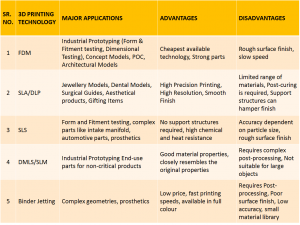Simple Tips to Avoid Common 3D Printing Mistakes

Anyone who has a 3D printer certainly also has a collection of unfinished parts, with misprints, absurd contractions or that did not come out in the desired finish. Unfortunately, we are still far from the plug and play concept but with some good practices, we can avoid mistakes and make the printing process more reliable. Here are simple tips for 3d printing that can help you get better results with your 3D printed parts.
Check the cables
Following the principle of Murphy’s Law may seem like a silly mistake, but bumping into the printer’s communication cable and accidentally unplugging it is more often than you might think. This oversight can damage machine entry resulting in unnecessary maintenance and repair costs. The connection of the 3D printer to the computer, made in most cases by USB cable, is fragile and should be taken seriously. Some printers already have the SD input that lets you print without your computer. If this is the case with your printer, prefer to use the SD card instead of a direct connection to your computer whenever possible.

Use a voltage stabilizer and a UPS
Imagine the scene after spending hours working on a one-piece CAD file, setting up the machine carefully, and after the tenth continuous hour of printing, there is a sudden power outage and all that work needs to be restarted from zero. Mains stability is a major cause of disruption of 3D printer communication. In locations where there is power grid instability or in a region with high rainfall, it is recommended to use a voltage stabilizer to prevent damage to electronic equipment or to use a UPS to ensure continuous printing.
Examine the model carefully before sending to print
The software makes no mistakes, the user makes mistakes. The phrase may seem a little aggressive, but we must remember that the computer only does what the user says. If the user uploads an unstoppable stl file, the software will slice the model and send it to the 3D printer just as it received it.
Some software warns you if they encounter possible errors due to lack of support or indicate the best positioning based on the largest contact area. But, not everyone will do this prior analysis for you. Then, consider analyzing the feasibility of printing your model before sending it to print.
How to improve positioning?
Unfortunately, this type of error is associated with the object’s spatial perception and mastery of 3D technology, which takes time, study, and experience to acquire. Following the instructions on how to print from a web repository is a good tip for beginners, and knowing the limits and optimal settings of your machine. Printing of test pieces is also a good option.
Store the filament properly
Proper storage of print materials is critical to good print media results. All materials are degraded, either by humidity, temperature, light or other factors. Degradation mainly interferes with nozzle extrusion when the layer is formed. Excess moisture polymers such as ABS and Nylon pop up too much at the time of extrusion, indicating poor storage. Storing in sealed bags with silica gel or dehumidifiers is one way to prevent this failure.
